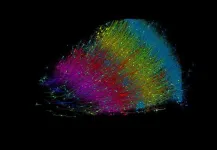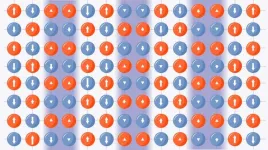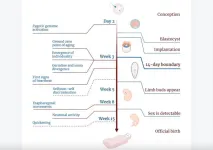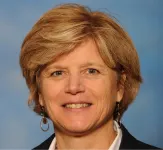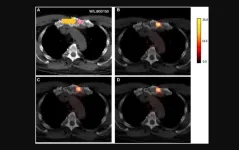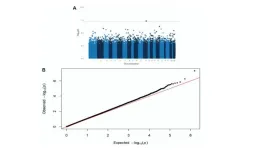An international team of researchers has discovered that the quantum particles responsible for the vibrations of materials—which influence their stability and various other properties—can be classified through topology. Phonons, the collective vibrational modes of atoms within a crystal lattice, generate disturbances that propagate like waves through neighboring atoms. These phonons are vital for many properties of solid-state systems, including thermal and electrical conductivity, neutron scattering, and quantum phases like charge density waves and superconductivity.
The spectrum of phonons—essentially the energy as a function of momentum—and their wave functions, which represent their probability distribution in real space, can be computed using ab initio first principle codes. However, these calculations have so far lacked a unifying principle. "For the quantum behavior of electrons, topology—a branch of mathematics—has successfully classified the electronic bands in materials. This classification shows that materials, which might seem different, are actually very similar. We already have catalogues of electronic topological behaviors, akin to a periodic table of compounds. Naturally, this led us to question: Can topology also characterize phonons?" explained B. Andrei Bernevig, a professor of physics at Princeton University, visiting professor at DIPC, and one of the study's authors.
In a study published in the journal Science, an international team from Princeton University, Zhejiang University, DIPC, ENS-CNRS, Max Planck Institute, and the University of the Basque Country uncovered that a wide range of materials could host topological phonons. Topology, the study of properties preserved through continuous deformations, is used to characterize manifolds. For instance, a Mobius strip is distinguished from a regular strip by a twist, and a doughnut differs from a sphere by a hole; these cannot be transformed into each other without cutting the manifold. "We first computed the phonon bands of thousands of quantum materials, identifying their wavefunctions and characterizing them by their symmetries, which provide a sort of local structure of the phonons," said Yuanfeng Xu, the first author of the study and a professor at Zhejiang University. "After completing this step, we employed topology to classify the global behavior of the phonon bands," he added.
Several phonon structure databases have been meticulously analyzed, revealing that at least half of the materials exhibit at least one non-atomic cumulative phononic band set. The team employed a formalism similar to that developed for characterizing electronic bands, as outlined in their previous work on Topological Quantum Chemistry (TQC).
An international team of scientists from the Princeton University, Donostia International Physics Center (DIPC), the University of the Basque Country (UPV/EHU), the Max Planck Institute, l’Ecole Normale Supérieure, the CNRS, and Zhejiang University have scanned several phonon databases and predict the existence of topological phonons in approximately 5000 materials.
Phonon offer a new avenue for achieving nontrivial band topologies in solid-state materials, potentially leading to phonon surface states that could complement or enhance electronic surface states. "The robustness of the topological surface phonon states can be leveraged for applications like frequency filtering or mechanical energy attenuation under imperfect conditions, as well as for heat transfer and infrared photoelectronics. Topological phonons could also pave the way for creating phonon diodes or acoustic waveguides," explained Nicolas Regnault, a professor at ENS-CNRS and one of the corresponding authors of the study. Analyzing data from over ten thousand materials, gathered from ab-initio calculations and stored in databases like PhononDB@kyoto-u and the Materials Project, they found that 50% of materials exhibit at least one non-trivial gap. "The tools for these calculations are hosted on the Bilbao Crystallographic Server," Luis Elcoro, a professor at the University of the Basque Country and another corresponding author, informed. "Once the symmetry eigenvalues of the bands are determined, all types of symmetry-indicated phonon topologies can be identified by these tools. TQC has proven to be a universal formalism for identifying topological properties in lattices," he added. Elcoro also mentioned that “after developing the theory and implementing it in computer codes, the topological diagnosis tools have been made publicly available on the website, allowing anyone to verify, reinterpret, or expand upon our findings”.
"We discovered more topological structures in phonons than we initially expected, and we anticipate that topological phonons will lead to rich and unconventional physics, much like topological electrons have," stated Maia G. Vergniory, a professor at DIPC and Max Planck in Dresden. She emphasized the importance of validating predictions for materials hosting topological phonons, noting that “such experiments might be more challenging than those for electronic topology, due to lack of direct imaging techniques”. The phonons have been cataloged in a public repository (https://www.topologicalquantumchemistry.com/topophonons), where researchers can access specific materials. "Every phononic surface state is listed in this database; the next step would be for experimentalists to measure them," mentioned Nicolas Regnault, highlighting the crucial role of experimental verification in advancing the field.
The team envisions new physics that may emerge from the coupling between topological electrons and phonons. If topological electron surface states coexist with phononic ones, this could facilitate strong electron-phonon coupling on the surface—though potentially not in the bulk—potentially leading to surface superconductivity. "We now must delve into understanding the influence of topology on electron-phonon coupling," concluded Bernevig, highlighting the next steps in their research.
Publication reference
Yuanfeng Xu, M. G. Vergniory, Da-Shuai Ma, Juan L. Mañes, Zhi-Da Song, B. Andrei Bernevig, Nicolas Regnault, Luis Elcoro.
Science 384, eadf8458 (2024)
DOI: 10.1126/science.adf8458
END
